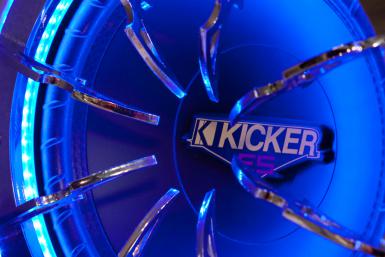Music is composed of frequencies that run the entire gamut of human hearing, and crossovers are designed to split out those frequencies into smaller chunks. The main purpose of doing that is to make sure that only the right frequencies reach the right speakers. That can help reduce distortion and help improve the overall sound quality of a car audio system.
There are two main types of crossovers, each of which is best suited to specific situations:
Passive Crossovers
These crossovers sit between the amp and the speakers, and they filter out unwanted frequencies. Some speakers have built-in passive crossovers. Since these crossovers are simply wired up in-between the amp and speakers, they are relatively easy to install. However, there is a certain amount of inefficiency that is inherent to passive crossovers.
Active Crossovers
These are also known as electronic crossovers, and they are both more complex and more expensive than passive units. Active crossovers require power sources, but they don’t waste power by filtering out amplified signals the way passive crossovers do.
Do I Really Need a Crossover?
Some car audio systems can get by just fine with no crossovers, but there are a number of circumstances where either a passive or active unit will improve the quality of the sound, efficiency of the system, or both.
If your car audio system uses coaxial speakers, you probably don’t need an additional crossover. Full range speakers already have built-in passive crossovers that filter the frequencies that reach each driver. Even if you add an amplifier into the mix, the built-in speaker crossovers should be more than sufficient. However, you may need a crossover if you add an amplifier and a subwoofer to that type of system.
On the other hand, you’ll typically need one or more crossovers if you plan on building a system that consists of component speakers, multiple amplifiers, and subwoofers. This is especially true if you plan on using individual amplifiers to drive specific speakers, such as your woofers or tweeters. Whether you choose active or passive crossovers, you’ll need something to keep undesired frequencies from reaching the speakers.
Can I Install a Crossover Myself?
Installing crossovers isn’t rocket science, but you will need a basic understanding of what you’re doing before undertaking this type of DIY project. Installing a passive is relatively simple since it just involves wiring a crossover between a speaker and the amp.
However, installing an active unit is a more complicated procedure. Active crossovers require power, so you’ll have to run power and ground wires to each unit. If you’ve already installed an amplifier, then you should be more than capable of installing crossovers.

Car Audio Crossovers
by
Tags:

Leave a Reply